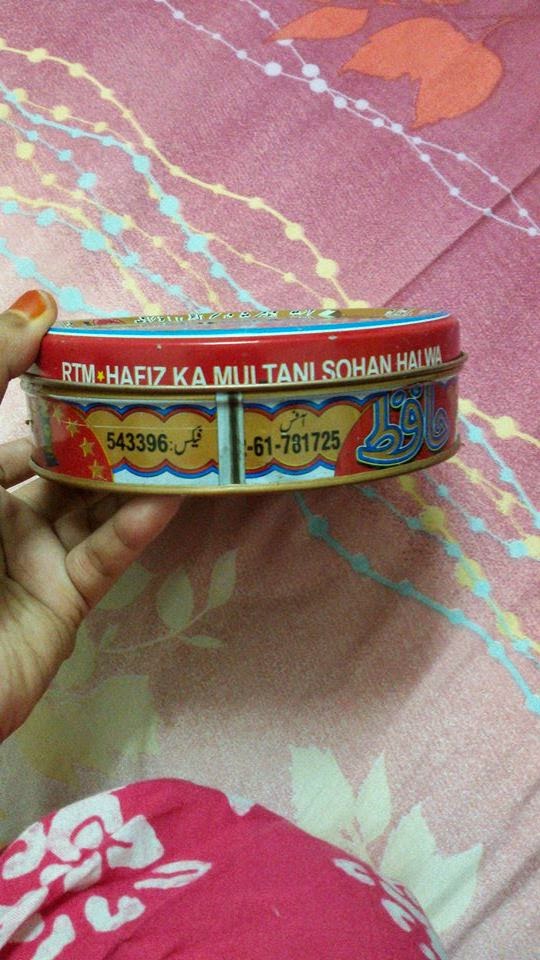Here is the picture of Gulab Jamun. :)
That is cute, round and sweet Gulab Jamun. If you ever try this, you would be addicted on that! Seriously I'm saying because it is absolutely different from the Malaysia's sweet dishes! If in Malaysia, we have ABC and cendol as the desserts, they (Pakistani) have Gulab Jamun as their dessert. Look, You can see the difference between their desserts and our desserts. From my opinion, the taste of Gulab Jamun is very very veryyy sweet! See, how many times I Said very very because it is absolutely sweet! Hehehe. Instead of swwt, you also could taste little bit milky and the fragrance of cinnamon and zafron. If you never taste any desserts from foreign, make sure that u must taste this Gulab Jamun! :) Yummy!!
Here, I will tell you about Gulab Jamun.
Gulab jamun is a milk-solids based dessert, popular in countries of South Asia such as India, Sri Lanka, Nepal, Pakistan and Bangladesh. It is also common in Mauritius and the Caribbean countries of Trinidad and Tobago, Guyana, Suriname and Jamaica. In Nepal, it is widely known as Lal Mohan, served with or without yogurt. It is made mainly from milk solids, traditionally from freshly curdled milk. In India, milk solids are prepared by heating milk over a low flame for a long time until most of the water content has evaporated. These milk solids, known as khoya in India and Pakistan, are kneaded into a dough, sometimes with a pinch of flour, and then shaped into small balls and deep fried at a low temperature of about 148 °C.[1] The balls are then soaked in a light sugary syrup flavored with green cardamom and rose water, kewra or saffron.[2] These days, gulab jamun mix is also commercially available. Gulab jamun is often served at weddings and birthday parties.
So, let's try ths Gulab Jamun and you can taste how sweet and milky it is!
Okay, enough with Gulab Jamun, because now I start craving on that. Huhu~
Second dessert that I got today is Barfi. By the way, for your information, don't confused with the film Barfi from Bollywood. Hehe. That is the title of a movie. And this Barfi is a dessert.
Here is the picture of Barfi.
Oh Khuda! Khuda in Urdu means God. Barfi also sweet, but it does not sweet as Gulab Jamun. The taste of barfi is more to milky and my friend said " it tastes like nestum". hehehe. So, whoever like something tasty like milky, nestum, you should try this. Barfi also delicious and yummy and for me, it tastes little bit like white chocolate. But, Barfi is more delicious la. As Pakistani said " ye mithai boht boht mithy hai! ". Hehehe. It means that "This dessert is very sweet!" or in Malay " Makanan ni sangat sangat manis la!". hehehe.
Here is some explanation about Barfi.
Barfi or burfi is a sweet confectionery from the Indian subcontinent. The name originates from the Persian word Barf, which means snow. A few of the famous varieties of barfi include Besan Barfi (made with gram flour), Kaaju Barfi (made with cashews), Pista Barfi (made with ground pistachios), and Sing Barfi (made with peanuts). The main ingredients of plain barfis include condensed milk and sugar. The ingredients are cooked in a vessel until the mixture solidifies.
The flavor of a Barfi is often enhanced with fruits (such as mango or coconut) or nuts (such as cashew, pistachio, or peanut) and spices (such as cardamom or rose water). Barfis are usually coated with a thin layer of edible metallic leaf known as vark. They are typically cut into square, diamond, or round shapes. Different types of Barfi vary in their color and texture.
The confection is served in India, all year round, but especially consumed during the holiday seasons, wedding ceremonies, and the religious festivals.
The last one is Sohan Halwa. Even though it is also counted as dessert, but for me it does not tasted sweet like Gulab Jamun and Barfi. This is because..... Maybe because so much halwa. huhu~
Here is the picture of Sohan Halwa.
Those are the pictures of Sohan Halwa and it's box.
Sohan Halwa (Hindi: सोहन हलवा; Urdu سوحن حلوى; [ˈsoːɦən ˈɦəlʋaː]) or Multani Sohan Halwa is a traditional dessert in India and Pakistan, which is a variety of dense, sweet confection or halwa and believed to be Persian in origin, linked with Iranian sweet Sohan.
It is made by boiling a mixture of water, sugar, milk and cornflour until it becomes solid. Saffron is used for flavoring. Ghee is used to prevent it from sticking to the pan. Almonds, pistachios and cardamom seeds are added. Unlike most other halwa dishes in the subcontinent, it is solid.
In conclusion, I am grateful and feel glad because I could taste the desserts from Pakistan. Even though might be Pakistanis have different tongue from Malaysian, but I believe some Malaysian love Pakistani foods! Since I have been grown up in Malaysia, so I believe, sometimes in life, we should try something that different in order to gain new experience and lesson in life! :)
At the end, Pakistan Zindabad! :)

.jpg)
.jpg)























